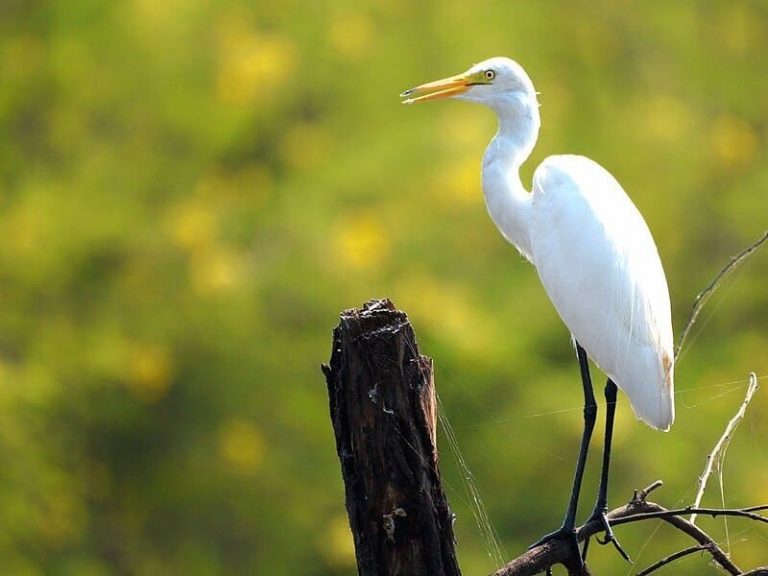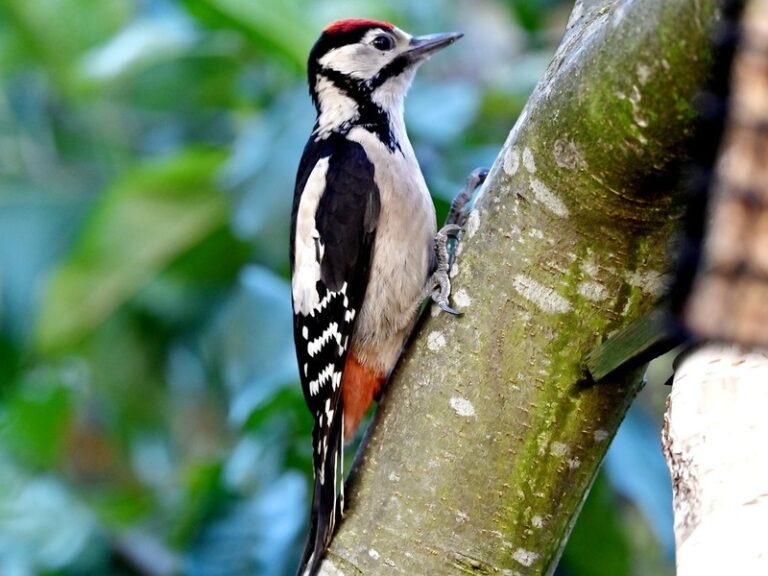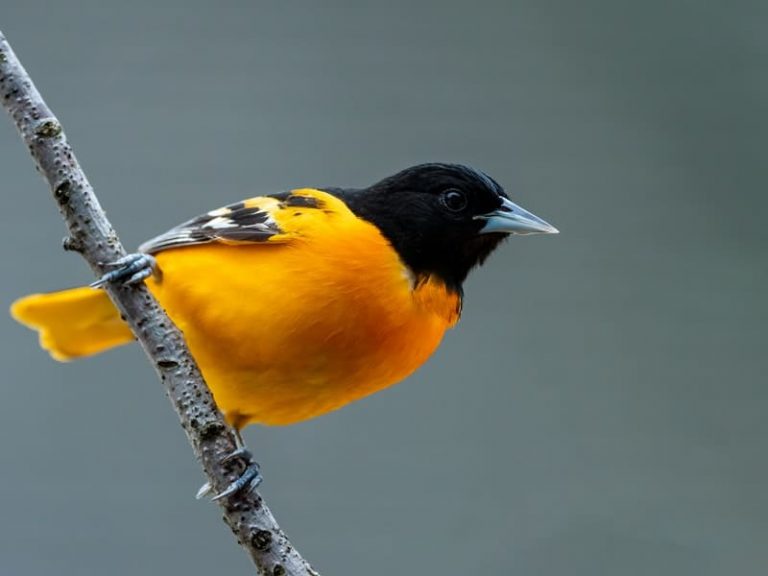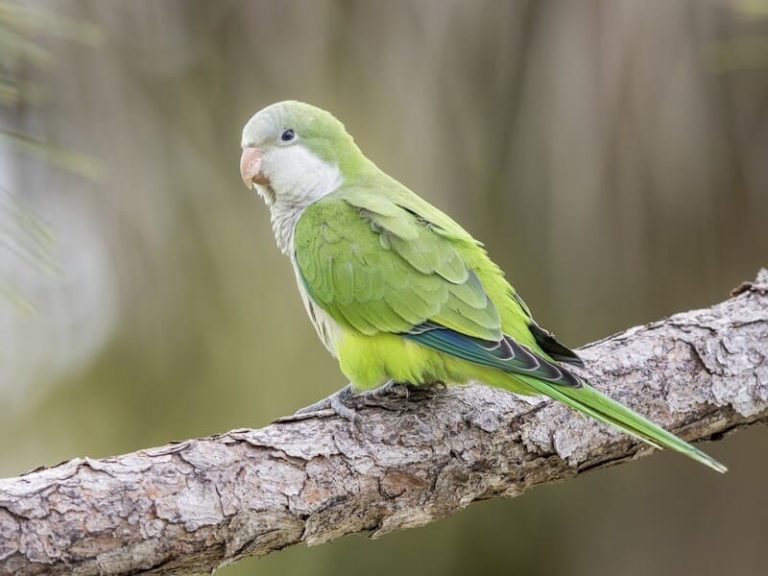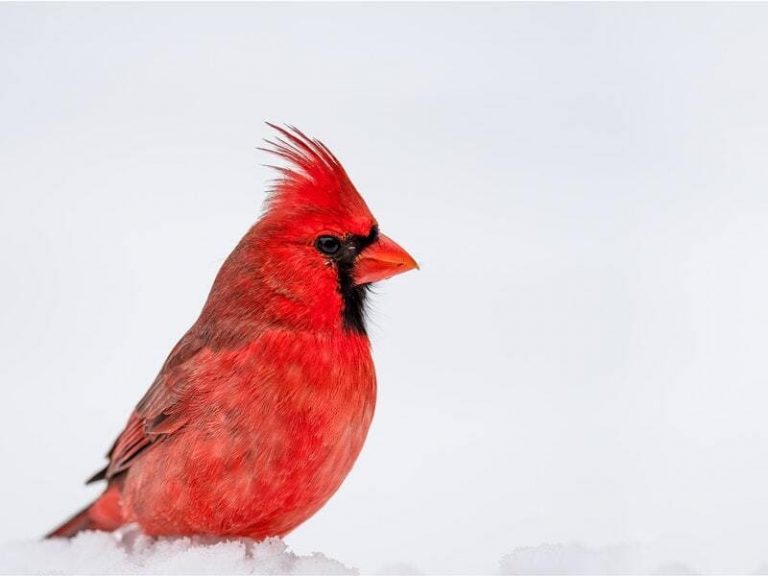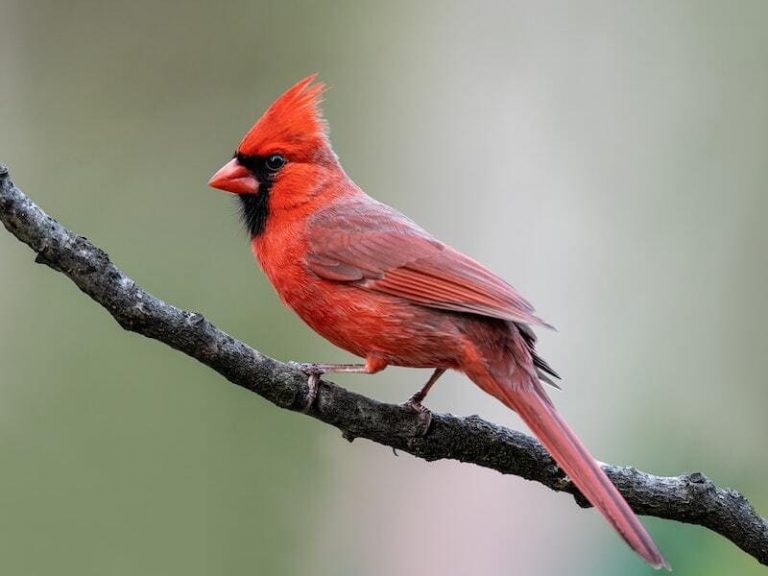12 Woodpeckers In Texas
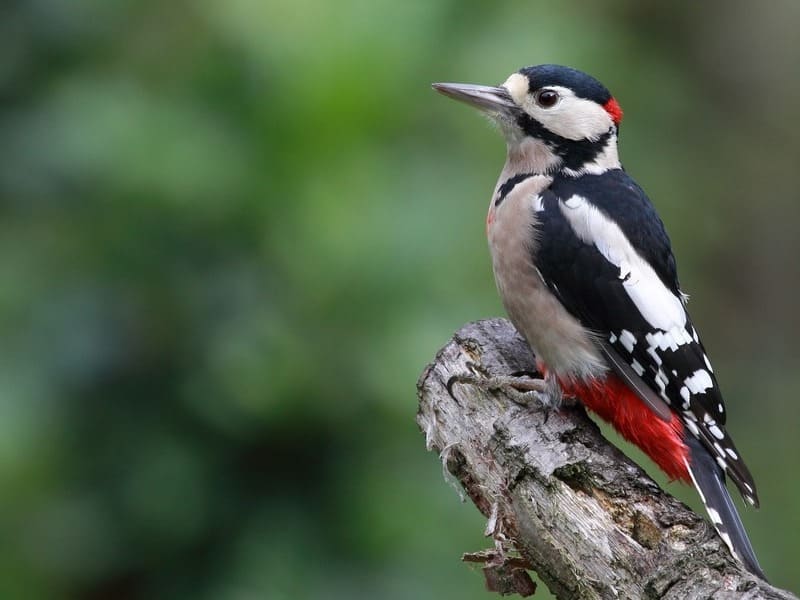
There are 12 woodpecker species in Texas. Woodpeckers are a common sight in the Lone Star State, and they can be found in a variety of habitats, including forests, parks, and even backyards.
These birds are known for their loud pecking noise, which they use to find food and communicate with other woodpeckers. In this blog post, we will take a closer look at 12 of the most common woodpeckers in Texas!
12 Species Of Woodpeckers In Texas
If you’re lucky enough to spot a woodpecker in Texas, there’s a good chance it will be a red-bellied woodpecker.
These small birds are common throughout the state, and they’re easily recognizable thanks to their bright red plumage.
However, Texas is home to many other species of woodpeckers, including the lesser-known ladder-backed woodpecker.
This bird is small and drab, with a forked tail that gives it its name.
Ladder-backed woodpeckers are found in dry, open habitats, and they often nest in cactus plants.
Another interesting member of the Texas woodpecker family is the red-cockaded woodpecker.
This bird is black and white, with a small red stripe on its head. Red-cockaded woodpeckers are only found in forests, where they nest in trees cavity.
So next time you’re out birdwatching in Texas, keep your eyes peeled for these different species of woodpeckers. Let’s discuss some more species of woodpeckers that you might find in Texas.
1. Pileated Woodpecker
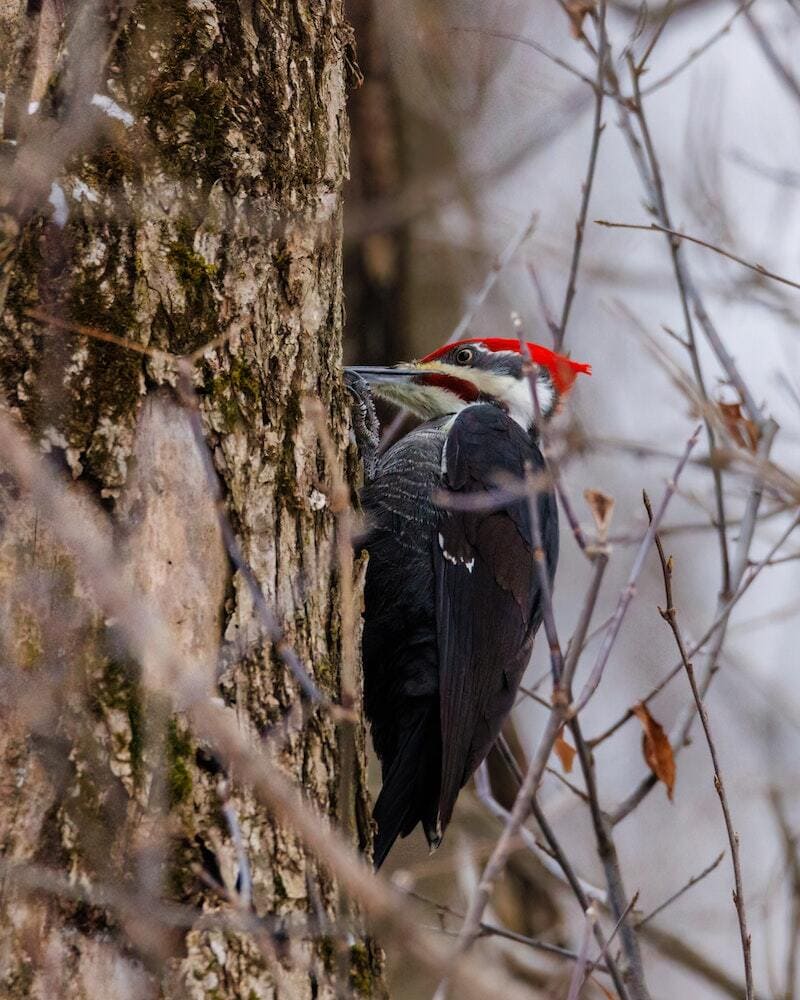
The Pileated Woodpecker is one of the largest woodpeckers in North America. Adults can reach up to 18 inches in length and have a wingspan of up to 30 inches.
They are black with white stripes on their wings and tail, and they have a distinctive red crest. Pileated Woodpeckers are found in forests across the United States and Canada.
They prefer mature forests with large trees, but they can also be found in suburban areas.
These woodpeckers in Texas are excellent excavators, and they use their powerful beaks to bore holes in trees in search of food. Their diet consists mainly of insects, but they also eat fruits and nuts.
2. Acorn Woodpecker
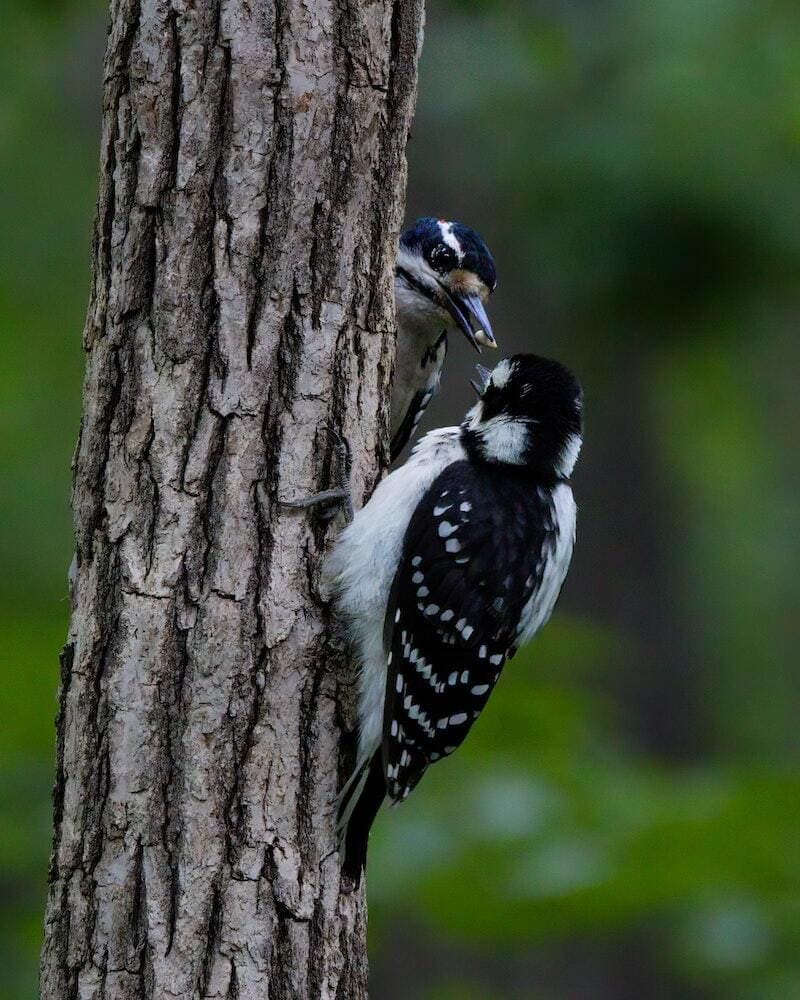
The Acorn Woodpecker is a small black and white bird with a distinctive red crest. These birds are found in wooded areas of North and Central America, where they feed on acorns, insects, and other small animals.
Acorn Woodpeckers are unique among birds in their use of storage “granaries.”
These Granaries are typically small holes that the birds excavate in trees, and they use them to store acorns for later consumption.
Acorn Woodpeckers are also known for their drumming behavior, which they use to communicate with other members of their flock.
This drumming can be so loud that it can be heard up to a mile away! Despite their small size, Acorn Woodpeckers are fascinating birds with a range of unique behaviors.
3. Red-bellied Woodpecker
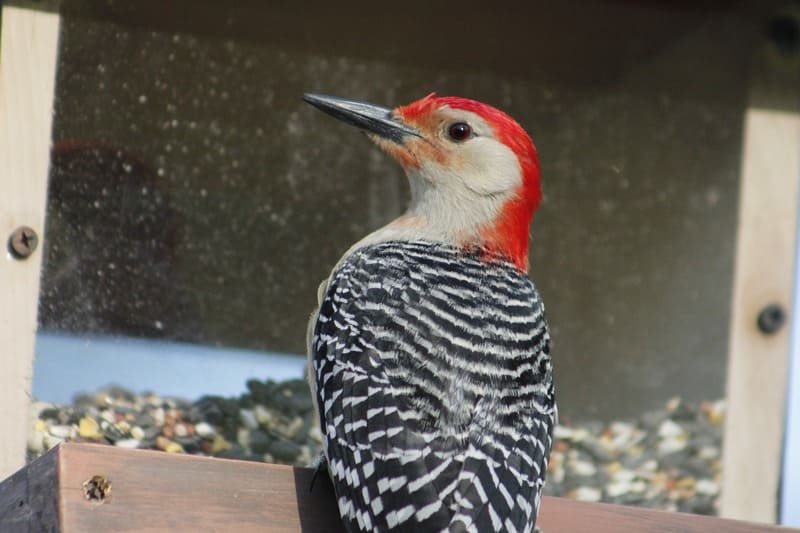
One of the most common woodpeckers in Texas is the red-bellied woodpecker. This bird gets its name from the reddish hue on its belly, which is often visible when the bird is perching on a tree branch.
The red-bellied woodpecker is a medium-sized bird with a length of about 9 inches. This bird has a black back and wings, with white markings on its head and neck.
The red-bellied woodpecker is an important part of the ecosystem, as it helps to control insect populations by eating ants, beetles, and other insects.
Woodpeckers are also an important food source for other animals, such as snakes and owls.
4. Yellow-bellied Sapsucker
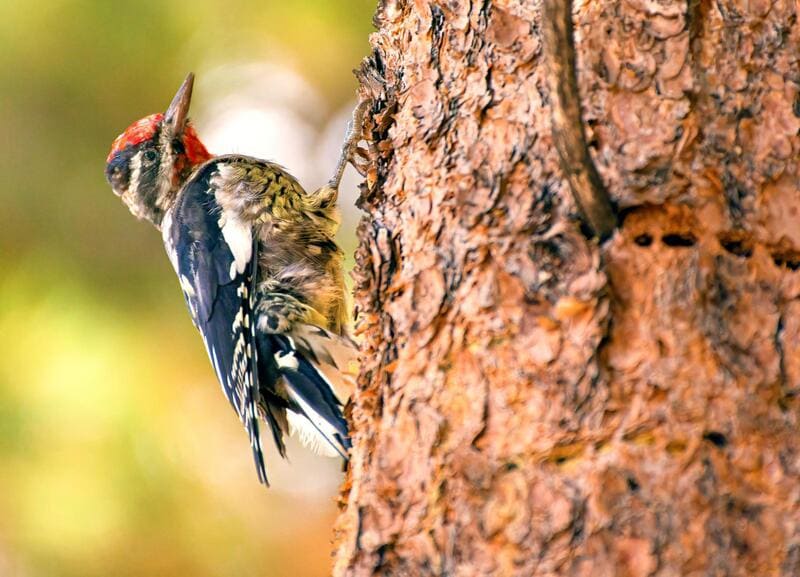
Woodpeckers are among the most interesting birds in Texas. One of the more unusual woodpeckers in Texas is the yellow-bellied sapsucker.
As its name suggests, this bird feeds on tree sap. It uses its long tongue to lap up the sap, and it also makes small holes in tree bark to reach the tasty treat inside.
While this might seem like destructive behavior, sapsuckers actually help to keep trees healthy.
The holes they make allow other animals to access the tree’s sap, and this can help to prevent infestations of harmful insects.
5. Golden-fronted Woodpecker
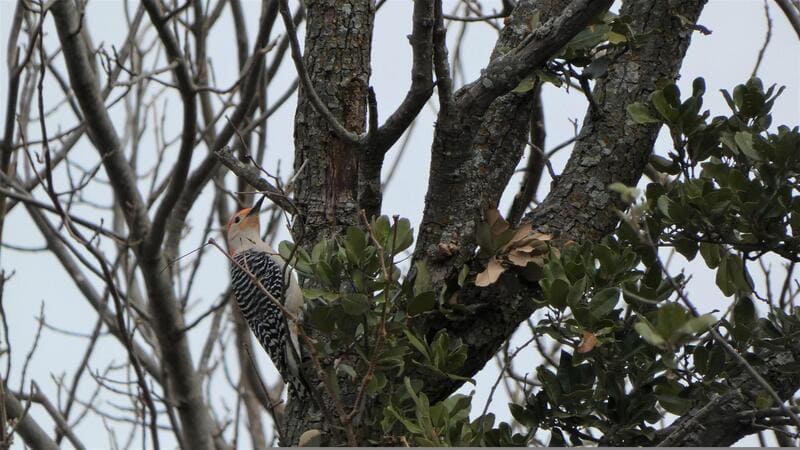
Golden-fronted woodpeckers are found in central and south Texas. These Woodpeckers are black with white stripes on their wings and back.
The front of their head and throat are a bright golden yellow. Males also have a red patch on the top of their heads.
Woodpeckers are shy birds but can be found around feeders scratching for insects in trees and on the ground.
If you’re lucky enough to live in an area where these beautiful birds live, you may be fortunate enough to see one up close.
6. Red-naped Sapsucker
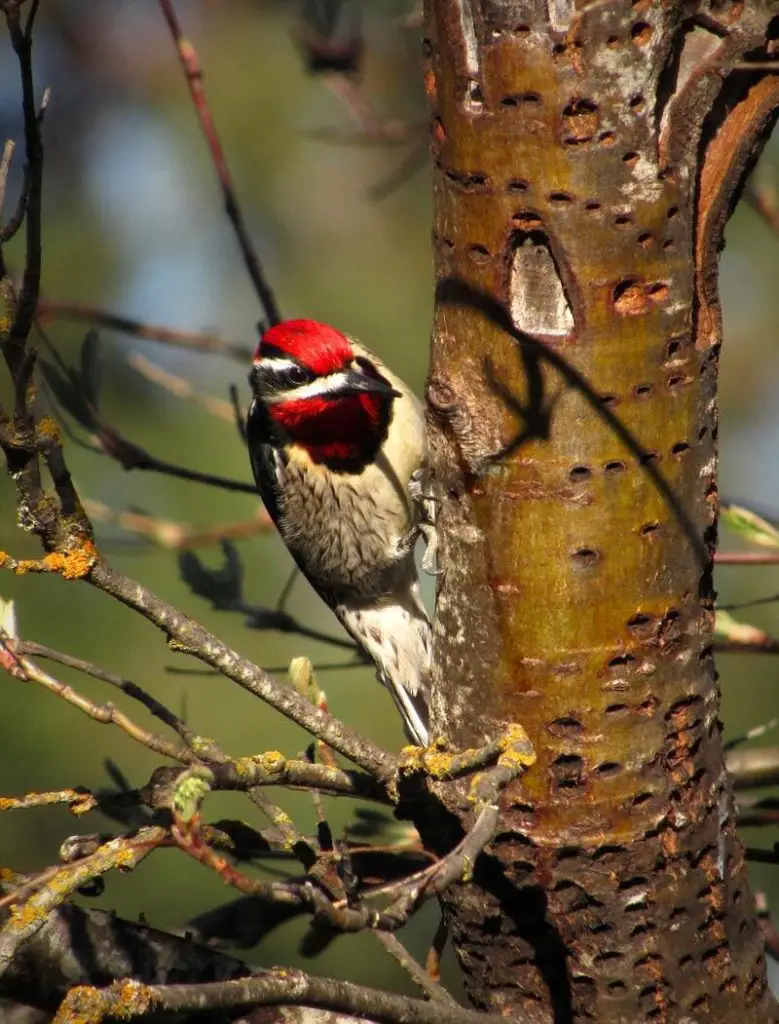
The red-naped sapsucker is the only species of woodpecker in North America that is known to drill horizontal rows of holes in trees.
The bird is mostly black with a white chest and belly and has a red cap that extends down the back of the neck. Male and female birds look alike.
Woodpeckers are not commonly seen in Texas, but the red-naped sapsucker has been known to occur in the state.
The bird is most likely to be found in woodlands near streams or rivers. The red-naped sapsucker is an interesting bird that makes a valuable contribution to its ecosystem.
7. Downy Woodpecker
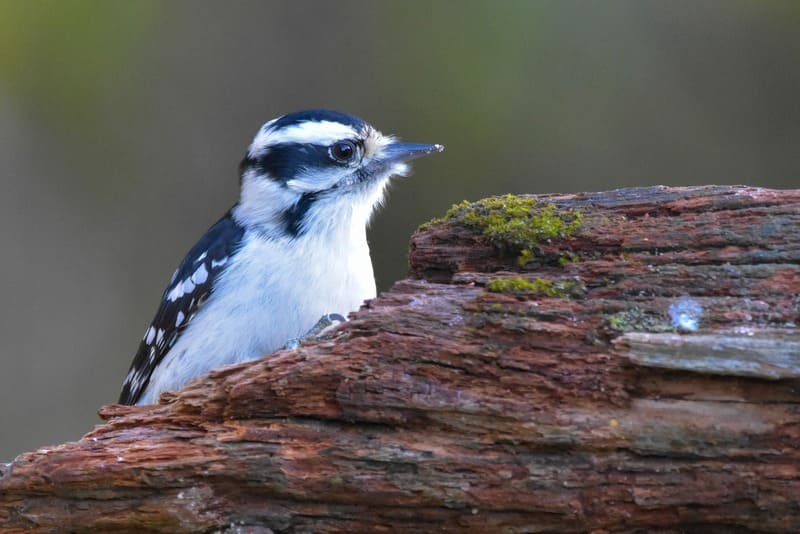
There are many different species of woodpecker, but the downy woodpecker is one of the most common woodpeckers in Texas. These small birds are black and white, with a short bill and a distinctive white stripe on their heads.
They play an important role in the ecosystem by drilled holes that provide homes for other animals and also help to control insect populations by eating Wood-boring beetles and other pests.
8. Northern Flicker
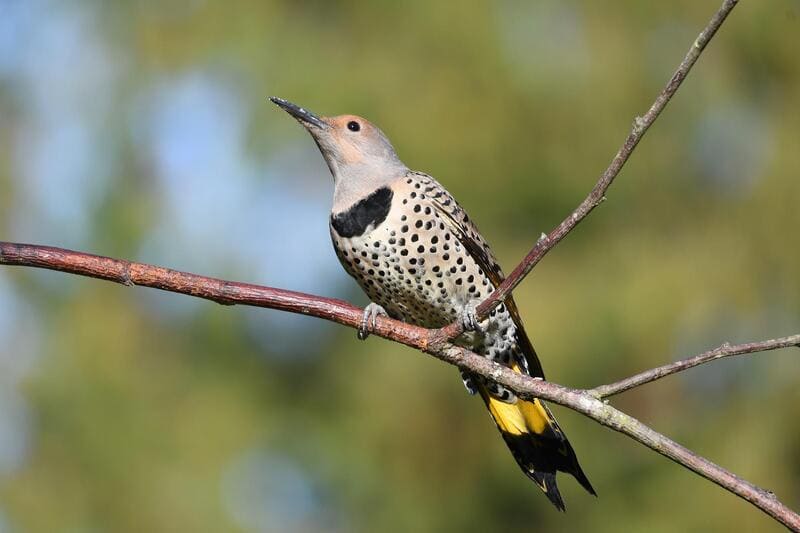
Texas, they are most commonly found in the eastern and central parts of the state. Northern Flickers are large birds, with a body length of 12-14 inches and a wingspan of 21-24 inches.
They have brownish-red plumage on their backs and tails, with a white underbelly and black bars on their wings. Males have a red patch on their chest, while females have a brown patch.
Northern Flickers are mainly insectivores but will also eat fruits, nuts, and seeds. The Northern Flicker is the State Bird of Alaska and Kansas.
9. Williamson’s Sapsucker
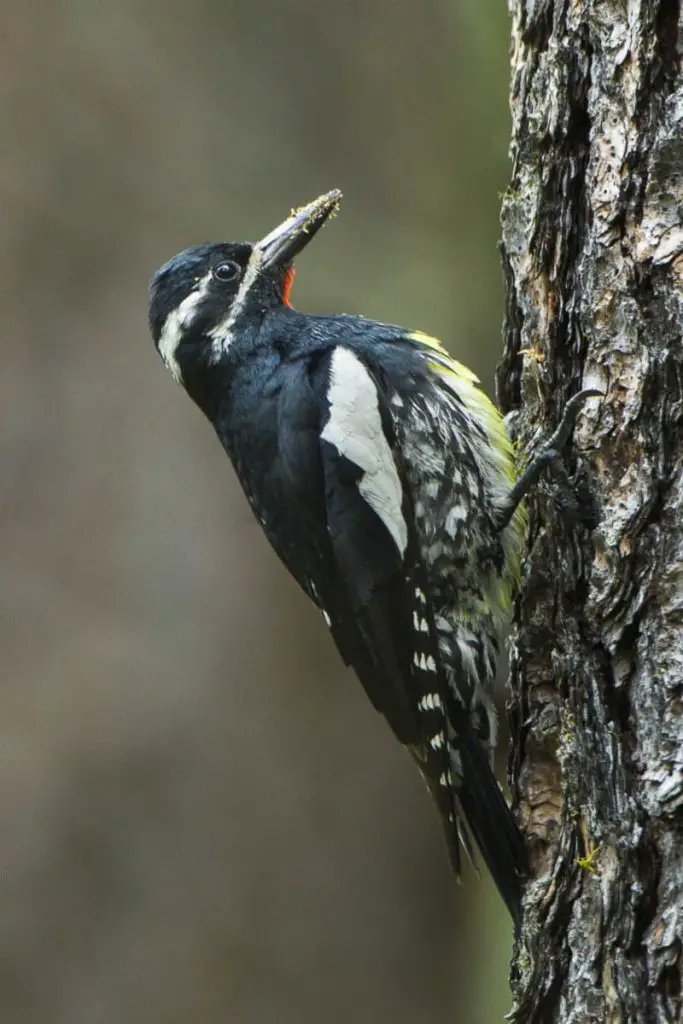
Woodpeckers are always a welcomed sight in Texas, and the Williamson’s Sapsucker is one of the most distinctive.
As its name implies, this Woodpecker specializes in drilling holes into trees to sip on the sap, but they will also feast on insects.
The Williamson’s Sapsucker is a medium-sized Woodpecker with a black back and white breast.
The males have a red throat and forehead, while the females sport a yellow throat. Both sexes have a white stripe down the side of their face that extends from their eye to their neck.
Woodpeckers are fascinating creatures, and the Williamson’s Sapsucker is one of the most interesting. If you’re lucky enough to spot one, make sure to enjoy the show!
10. Ivory-billed Woodpecker
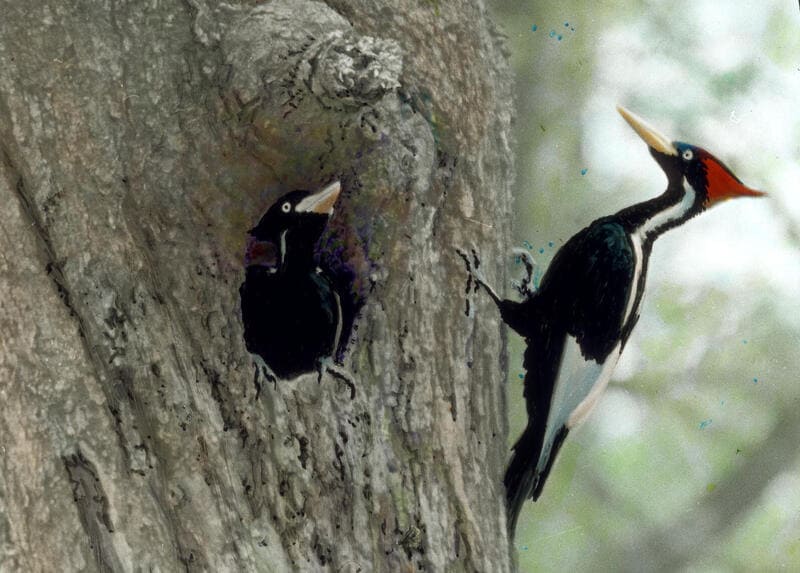
Woodpeckers are truly mesmerizing creatures, and the ivory-billed woodpecker is no exception.
These beautiful birds are the largest woodpeckers in Texas, and they once ranged across the southeastern United States.
However, the ivory-billed woodpecker is now considered extinct due to habitat loss and hunting.
Although there have been a few sightings of the bird in recent years, none of these have been confirmed.
The last known ivory-billed woodpecker was seen in 1944, and it is believed that this bird was the last of its kind.
Even though the ivory-billed woodpecker is gone, its memory lives on in the form of plaques, stamps, and paintings.
This magnificent bird will always be remembered for its beauty and grace.
11. Red-cockaded Woodpecker
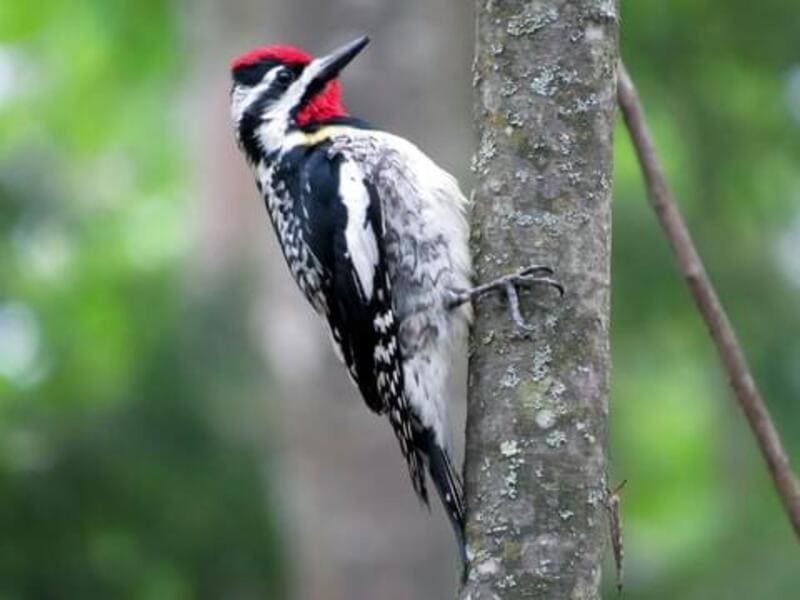
The Red-cockaded Woodpecker is a type of Woodpecker that is found in the southeastern United States, including Texas.
This Woodpecker is about the size of a Robin and has a black and white striped back.
The Red-cockaded Woodpecker was once common in the southeastern United States, but its population has declined due to deforestation and habitat loss.
As a result, the Red-cockaded Woodpecker is now listed as endangered.
12. Hairy Woodpecker
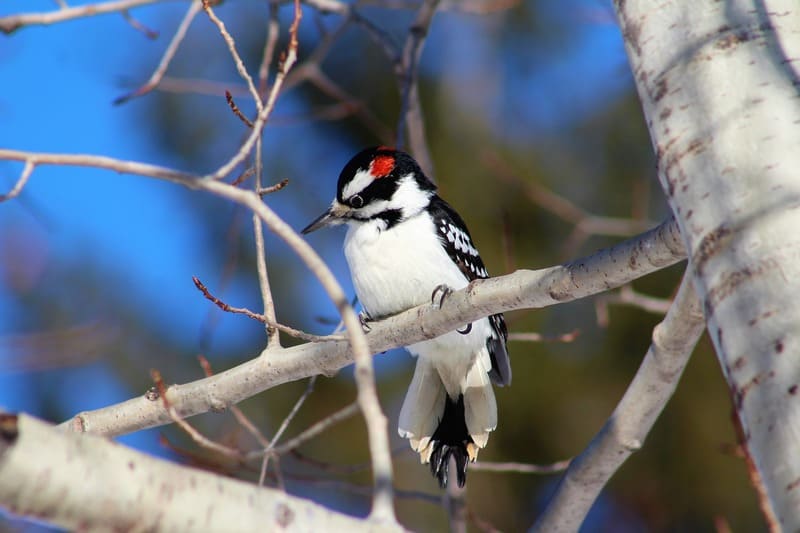
The Hairy Woodpecker is a member of the family Picidae, which includes all woodpeckers. It is black with white stripes on its back.
The bird’s wing span is about 15 inches. The sexes are similar in plumage, but the male has a red patch on the back of its head. This woodpecker is found in North America east of the Rocky Mountains.
Its one of the woodpeckers in Texas who feeds on insects, larvae, and wood-boring beetle grubs that it obtains by chiseling holes into trees.
The bird often excavates its own nesting cavity, which it lines with wood chips. Both parents help to incubate the eggs and care for the young.
Although the Hairy Woodpecker is not considered to be endangered, its numbers have declined in some parts of its range due to habitat loss.
FAQs
Let’s discuss some most frequently asked questions about different woodpeckers in Texas.
What is the biggest woodpecker in Texas?
The biggest woodpecker in Texas is the pileated woodpecker. It can be up to 20 inches long and has a wingspan of 32 inches.
Are there woodpeckers in South Texas?
Yes, there are woodpeckers in South Texas. Woodpeckers can be found throughout the United States, parts of Canada, and northern Mexico. In South Texas, you can find the:
- Red-headed woodpecker
- Yellow-bellied sapsucker
- Acorn woodpecker
- Hairy woodpecker
Where do woodpeckers live in Texas?
Typically, woodpeckers will live in wooded areas across Texas. This includes both deciduous forests and coniferous forests.
They tend to build their nests in trees, using small holes that they peck into the bark. In terms of specific location, you can find woodpeckers throughout most of North America east of the Rockies.
Are there woodpeckers in West Texas?
Yes, there are several species of woodpeckers that call West Texas home. These include the Ladder-backed Woodpecker, the Hairy Woodpecker, and the Red-bellied Woodpecker.
Final Words
If you are a bird lover and enjoy spending time outdoors, Texas is the place for you. With twelve different types of woodpeckers in Texas, there’s always an opportunity to see one or more of these amazing birds in action.
Who knows, maybe you’ll even be lucky enough to spot the elusive ivory-billed woodpecker!
Interesting articles:

